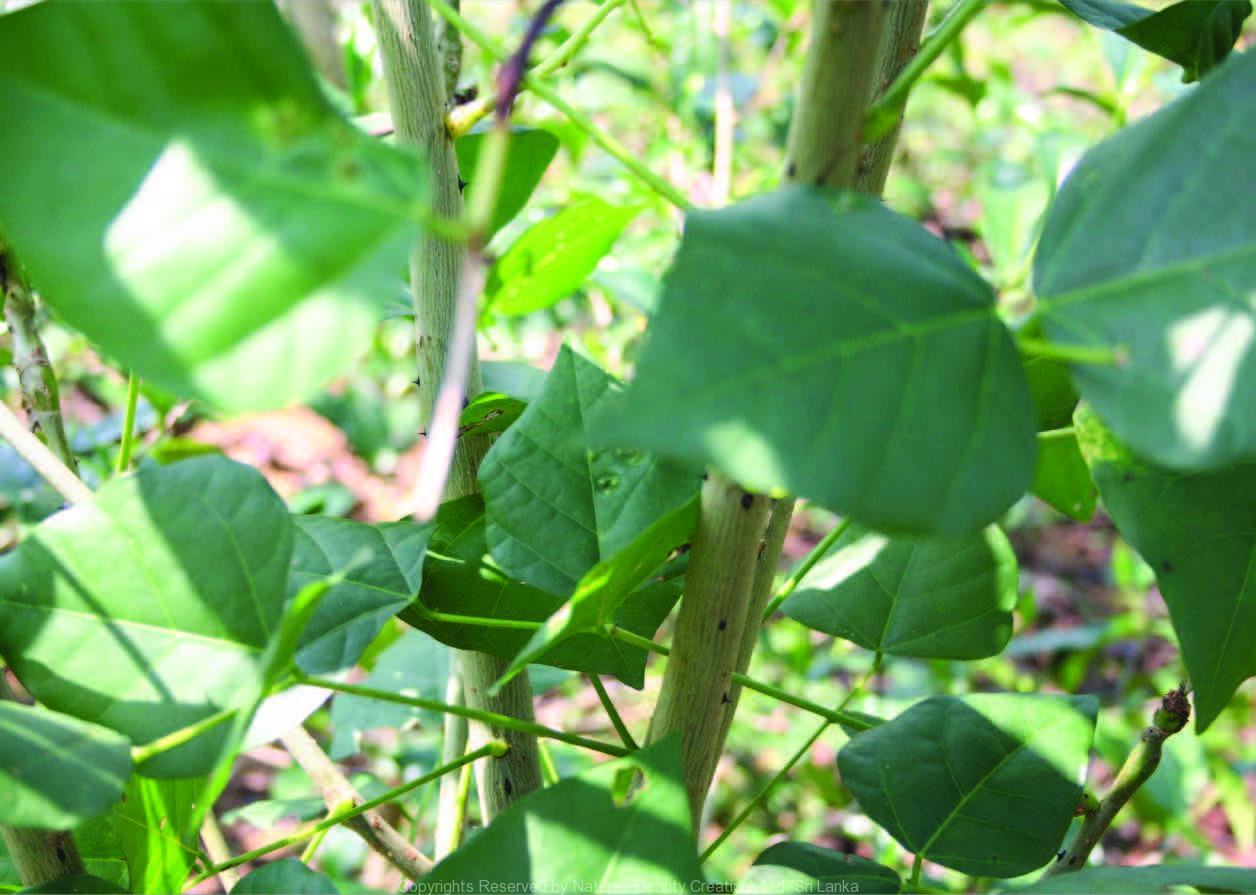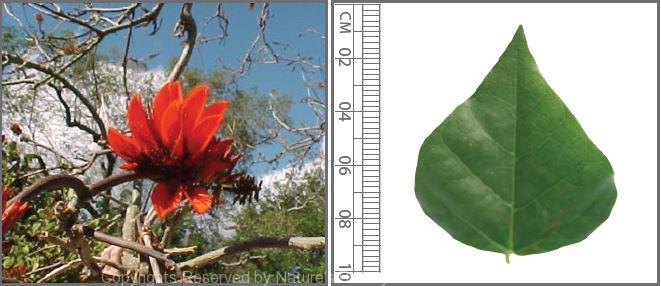

Traditional Knowledge
Useful plant parts :
Bark, seed and leaf
Uses in traditional medicine :
- Young leaves are prepared as a vegetable and taken as a vermifuge to control the parasitic worms in the digestive track
- Fresh bark ground with neem seed oil is applied on glandular swellings and used in skin inflammations
- Leaves are used to relieve earache, toothache, coughs and asthma
- Seeds are used to treat cancer
Scientific Research
Chemical constituents:
Isoflavonoids: erycristagallin, cristacarpin, orientanol B, C and F, eryvarin A–G, sigmoidin K, phaseollidin, phaseollin, isobavachin, eryvariestyrene, erystagallin A, folitenol, biseryvarin A from root; D-galactose-binding lectin from seeds
Bioactivity :
Erycristagallin and orientanol B: antibacterial stem bark extract: effective against osteophorosis, inhibits bone loss and improves the biomechanical properties of bone; D-galactose-binding lectin: agglutinate human erythrocytes; methanol extract of leaves: hypoglycaemic; methanol extract of seeds: effective in hyperlipidaemia
Clinical:
References : Balamurugan, G. and Shantha, A., (2010), Effect of Erythrina variegata seed extract on hyperlipidemia elicited by high-fat diet in wistar rats, J Pharm Bioallied Sci, 2(4), 350-5. Datta, T. K. and Basu, P. S., (1981), Identification, isolation and some properties of lectin from the seeds of Indian coral tree [Erythrina variegata (Linn.) var. orientalis (Linn.) Merrill], Biochemical Journal, 197(3), 751-753. Kumar, A. et al., (2010), Erythrina variegata Linn: A review on morphol- ogy, phytochemistry and pharmacological aspects, Pharmacogn rev, 4(8), 147-152. Kumar, A. et al., (2011), Hypoglycemic activity of Erythrina variegata leaf in streptozotocin-induced diabetic rats, Pharm Biol, 49(6), 577-82. Rahman, M. Z. et al., (2010), Bio active isoflavones from Erythrina variegata L, Turk J pharm sci, 7(1), 21-23. Sato, M. et al., (2003), Antibacterial property of isoflavonoids isolated from Erythrina variegata against cariogenic oral bacteria, Phytomedicine, 10(5), 427-433. Tanaka, H. et al., (2002), Antibacterial activity of isoflavonoids isolated from Erythrina variegata against methicillin-resistant Staphylococcus aureus, Letters in Applied Microbiology, 35, 494-498. Tanaka, H. et al., (2010), A new biisoflavonoid from the roots of Erythrina variegata, Nat Prod Commun, 5(11), 1781-4. Tanaka, H. et al., (2003), Eryvarins F and G, two 3-phenoxychromones from the roots of Erythrina variegata, Phytochemistry, 62(8), 1243-1246. Telikepalli, H. et al., (1990), Isoflavonoids and a cinnamyl phenol from root extracts of Erythrina variegata, Phytochemistry, 29(6), 2005-2007. Zhang, Y. et al., (2007), Anti-osteoporotic effect of Erythrina variegata L. in ovariectomized rats, Journal of Ethnopharmacology, 109, 165-169. Zhang, Y. et al., (2010), Erythrina variegata extract exerts osteoprotective effects by suppression of the process of bone resorption, Br J Nutr, 104(7), 965-71.
Copyrights Reserved By
Natures Beauty Creations



